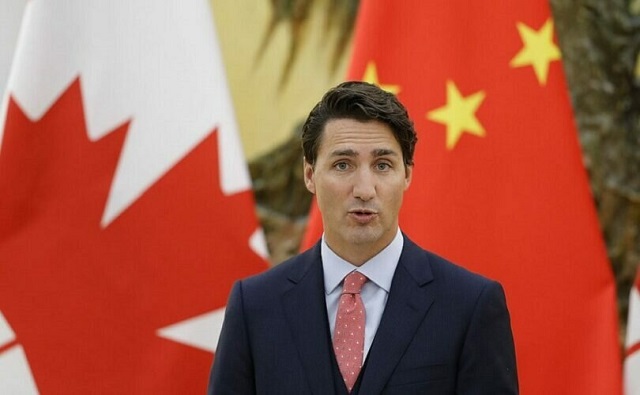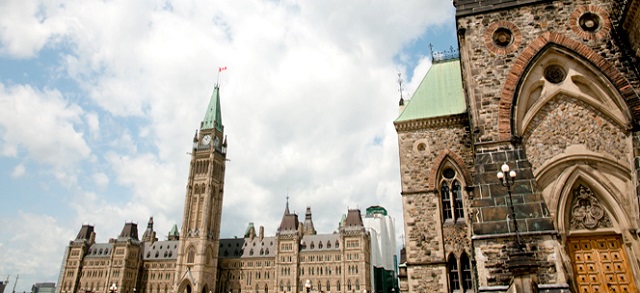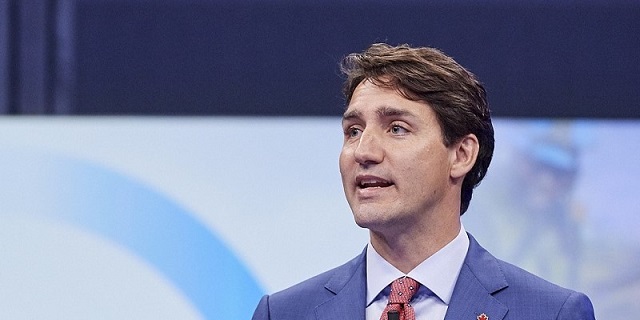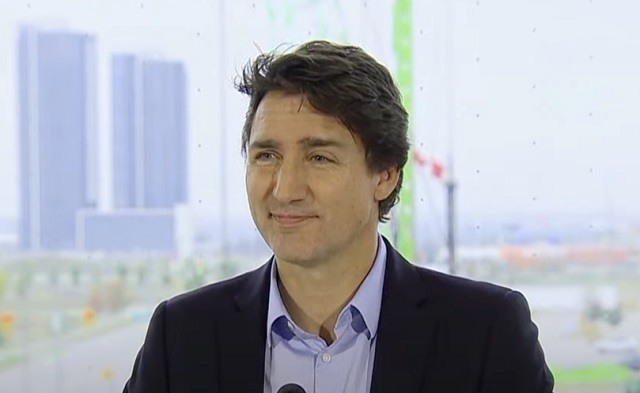Opinion
3,000 acres of farmland, yet nowhere to build a pool.

There are 3000 acres but nowhere to plant a pool. Councillor Buchanan asked Mr. Curtis the city manager, during budget deliberations November 20, 2018, if there was anywhere north of the river to build a pool, Mr. Curtis said no. Four years ago I was appointed to sit on the Community Action Committee to look at the need or recommendations for an Aquatic Centre in Red Deer. A new Mayor and a new Council and time was of the essence.
The city wanted in 2014 to renovate the downtown pool and it was obvious by the paperwork and answers. They repeated, Michener pool was owned by the province. Timberlands had no room available as it was filled with 3 planned high schools and sports fields. Hazlett Lake was too many years down the road, and the Canada Games was in 2019. It had to be built downtown.
That was 4 years ago and we are no closer to having a 50m pool, than we were 4 years ago. But now the city wants it built in Timberlands near the high schools. It would be like the Collicutt Centre near high schools. Also it will be like the Collicutt, in that it will be east of 30 Ave, between 29 Street and 69 Street. 30 Ave will become like Calgary’s Deerfoot Trail with all that traffic.
In about 300 acres we will have 3 high schools, sports fields, pickle ball courts and an aquatic centre, but in 3,000 acres north of 11A there is no room to park a pool.
Councillor Wong asked about, in my mind, the perfect spot just north of 11a near Hazlett Lake, visible to the QE2 and Mr. Curtis said the road allowance would be too narrow and they would have to buy private land to accommodate the pool and services. That would add uncertainty to the costs, but they do not mention that costs uncertainty when they talk about buying 2.5 acres of private land in the Timberlands. Is it a done deal, have they already made a conditional seal subject to council approval? I do not know.
Mr. Curtis reminded council that the city has had 2 opportunities to build a 50m pool in the last 20 years and they were squandered away. One when building the Collicutt and again when they renovated the downtown pool. Will they do it again?
The city just built the Servus Arena and the college just opened a new ice facility and the city wants to build a new rink to replace the Kinex arena when it fails. The Mayor says Red Deer services what it has. Looks like we will get another new arena, slated for the Dawe but many are expressing doubts about the feasibility of that venture and feel that it will be ultimately built by the Collicutt Centre.
In 2001 the city opened it’s 4th and last pool with a population of about 70,000 people. The city services what it has. If you read the financial statements you will notice 2 things that our population is just shy of 100,000 people and that they expect the Michener Pool will be closed at some point in the next capital budgetary cycle. Leaving us with 3 pools.
If we renovate downtown pool we could be downtown to 2 pools for awhile then back to 3 pools for many years to come. We only build or renovate pools every 20-30 years and by then the Dawe and Collicutt pools will be 70 and 50 years old.
Using the Aquatic Centre as a catalyst to spur development if we built it north of 11a where development has yet to start. Shoehorning it in with 3 new high schools, new sports fields and pickle ball courts will not get the same bang for the buck.
Why not combine the new ice rink and 50 meter pool into a Collicutt style complex in an empty field on the north west corner of Red Deer like we did with the Collicutt Center on the south-east corner of Red Deer.
Spurring development and enjoyed by 60% of recreation facility users in Red Deer, far surpassing all other pools combined.
This will not happen, because the city is too focused on process and awaiting good fortune to come a calling. I watched the debate and I noticed that council sits in a semi-circle facing in and I marvelled at how their attention is focused in and not out.
I also noticed that the Mayor and City Manager sit so much higher than council, reigning supreme over the lowly council. Enforced in my mind by little actions like the Mayor telling a councillor his question has taken 6 minutes, though there are no time lines to follow. Shouldn’t an elected councillor in his elected duties as guardians of the public purse be allowed the same latitude and time as the equally elected mayor?
We have 9 strong and very intelligent elected members looking after our well being, should they not be allowed to bring their strength to the table? We have people trained in law, economics, planning, business, agriculture, politics, law enforcement, education, history, to name but a few. Showcase them don’t muzzle them.
If they have concerns don’t dismiss them or limit their time, get to the bottom of it, that is why we elected them. The city has for many years survived the booms and busts of the Alberta economy but we have not recovered and are not enjoying the rebounding economy like the rest of the province for the last few years, why? Our economy is failing while everyone else is enjoying growth and our declining population is facing more doom and gloom while those around us our seeing positive growth. Perhaps it is time to stop waiting for potential future development to land in our lap and make Red Deer attractive to businesses, residents, tourists and athletes to name but a few.
As one gentleman wrote about us hosting the Canada Games but we can’t hold some of the events, and we are showcasing to the country what we don’t have. Poor publicity. If only we had looked outward and acted those other times. Just saying.
Business
Canada’s economy has stagnated despite Ottawa’s spin

From the Fraser Institute
By Ben Eisen, Milagros Palacios and Lawrence Schembri
Canada’s inflation-adjusted per-person annual economic growth rate (0.7 per cent) is meaningfully worse than the G7 average (1.0 per cent) over this same period. The gap with the U.S. (1.2 per cent) is even larger. Only Italy performed worse than Canada.
Growth in gross domestic product (GDP), the total value of all goods and services produced in the economy annually, is one of the most frequently cited indicators of Canada’s economic performance. Journalists, politicians and analysts often compare various measures of Canada’s total GDP growth to other countries, or to Canada’s past performance, to assess the health of the economy and living standards. However, this statistic is misleading as a measure of living standards when population growth rates vary greatly across countries or over time.
Federal Finance Minister Chrystia Freeland, for example, recently boasted that Canada had experienced the “strongest economic growth in the G7” in 2022. Although the Trudeau government often uses international comparisons on aggregate GDP growth as evidence of economic success, it’s not the first to do so. In 2015, then-prime minister Stephen Harper said Canada’s GDP growth was “head and shoulders above all our G7 partners over the long term.”
Unfortunately, such statements do more to obscure public understanding of Canada’s economic performance than enlighten it. In reality, aggregate GDP growth statistics are not driven by productivity improvements and do not reflect rising living standards. Instead, they’re primarily the result of differences in population and labour force growth. In other words, they aren’t primarily the result of Canadians becoming better at producing goods and services (i.e. productivity) and thus generating more income for their families. Instead, they primarily reflect the fact that there are simply more people working, which increases the total amount of goods and services produced but doesn’t necessarily translate into increased living standards.
Let’s look at the numbers. Canada’s annual average GDP growth (with no adjustment for population) from 2000 to 2023 was the second-highest in the G7 at 1.8 per cent, just behind the United States at 1.9 per cent. That sounds good, until you make a simple adjustment for population changes by comparing GDP per person. Then a completely different story emerges.
Canada’s inflation-adjusted per-person annual economic growth rate (0.7 per cent) is meaningfully worse than the G7 average (1.0 per cent) over this same period. The gap with the U.S. (1.2 per cent) is even larger. Only Italy performed worse than Canada.
Why the inversion of results from good to bad? Because Canada has had by far the fastest population growth rate in the G7, growing at an annualized rate of 1.1 per cent—more than twice the annual population growth rate of the G7 as a whole at 0.5 per cent. In aggregate, Canada’s population increased by 29.8 per cent during this time period compared to just 11.5 per cent in the entire G7.
Clearly, aggregate GDP growth is a poor tool for international comparisons. It’s also not a good way to assess changes in Canada’s performance over time because Canada’s rate of population growth has not been constant. Starting in 2016, sharply higher rates of immigration have led to a pronounced increase in population growth. This increase has effectively partially obscured historically weak economic growth per person over the same period.
Specifically, from 2015 to 2023, under the Trudeau government, inflation-adjusted per-person economic growth averaged just 0.3 per cent. For historical perspective, per-person economic growth was 0.8 per cent annually under Brian Mulroney, 2.4 per cent under Jean Chrétien and 2.0 per cent under Paul Martin.
Due to Canada’s sharp increase in population growth in recent years, aggregate GDP growth is a misleading indicator for comparing economic growth performance across countries or time periods. Canada is not leading the G7, or doing well in historical terms, when it comes to economic growth measures that make simple adjustments for our rapidly growing population. In reality, we’ve become a growth laggard and our living standards have largely stagnated for the better part of a decade.
Authors:
Fraser Institute
Powerful players count on corruption of ideal carbon tax

From the Fraser Institute
Prime Minister Trudeau recently whipped out the big guns of rhetoric and said the premiers of Alberta, Nova Scotia, New Brunswick, Newfoundland and Labrador, Ontario, Prince Edward Island and Saskatchewan are “misleading” Canadians and “not telling the truth” about the carbon tax. Also recently, a group of economists circulated a one-sided open letter extolling the virtues of carbon pricing.
Not to be left out, a few of us at the Fraser Institute recently debated whether the carbon tax should or could be reformed. Ross McKitrick and Elmira Aliakbari argued that while the existing carbon tax regime is badly marred by numerous greenhouse gas (GHG) regulations and mandates, is incompletely revenue-neutral, lacks uniformity across the economy and society, is set at an arbitrary price and so on, it remains repairable. “Of all the options,” they write, “it is widely acknowledged that a carbon tax allows the most flexibility and cost-effectiveness in the pursuit of society’s climate goals. The federal government has an opportunity to fix the shortcomings of its carbon tax plan and mitigate some of its associated economic costs.”
I argued, by contrast, that due to various incentives, Canada’s relevant decision-makers (politicians, regulators and big business) would all resist any reforms to the carbon tax that might bring it into the “ideal form” taught in schools of economics. To these groups, corruption of the “ideal carbon tax” is not a bug, it’s a feature.
Thus, governments face the constant allure of diverting tax revenues to favour one constituency over another. In the case of the carbon tax, Quebec is the big winner here. Atlantic Canada was also recently won by having its home heating oil exempted from carbon pricing (while out in the frosty plains, those using natural gas heating will feel the tax’s pinch).
Regulators, well, they live or die by the maintenance and growth of regulation. And when it comes to climate change, as McKitrick recently observed in a separate commentary, we’re not talking about only a few regulations. Canada has “clean fuel regulations, the oil-and-gas-sector emissions cap, the electricity sector coal phase-out, strict energy efficiency rules for new and existing buildings, new performance mandates for natural gas-fired generation plants, the regulatory blockade against liquified natural gas export facilities” and many more. All of these, he noted, are “boulders” blocking the implementation of an ideal carbon tax.
Finally, big business (such as Stellantis-LG, Volkswagen, Ford, Northvolt and others), which have been the recipients of subsidies for GHG-reducing activities, don’t want to see the driver of those subsidies (GHG regulations) repealed. And that’s only in the electric vehicle space. Governments also heavily subsidize wind and solar power businesses who get a 30 per cent investment tax credit though 2034. They also don’t want to see the underlying regulatory structures that justify the tax credit go away.
Clearly, all governments that tax GHG emissions divert some or all of the revenues raised into their general budgets, and none have removed regulations (or even reduced the rate of regulation) after implementing carbon-pricing. Yet many economists cling to the idea that carbon taxes are either fine as they are or can be reformed with modest tweaks. This is the great carbon-pricing will o’ the wisp, leading Canadian climate policy into a perilous swamp.
Author:
-

 COVID-192 days ago
COVID-192 days agoPro-freedom Canadian nurse gets two years probation for protesting COVID restrictions
-

 espionage2 days ago
espionage2 days agoTrudeau’s office was warned that Chinese agents posed ‘existential threat’ to Canada: secret memo
-

 Economy2 days ago
Economy2 days agoMassive deficits send debt interest charges soaring
-

 Business1 day ago
Business1 day agoBusiness investment key to addressing Canada’s productivity crisis
-

 Jordan Peterson1 day ago
Jordan Peterson1 day agoJordan Peterson slams CBC for only interviewing pro-LGBT doctors about UK report on child ‘sex changes’
-

 International1 day ago
International1 day agoBrussels NatCon conference will continue freely after court overturns police barricade
-

 Business1 day ago
Business1 day agoFederal budget fails to ‘break the glass’ on Canada’s economic growth crisis
-

 Frontier Centre for Public Policy1 day ago
Frontier Centre for Public Policy1 day agoThe Smallwood solution









